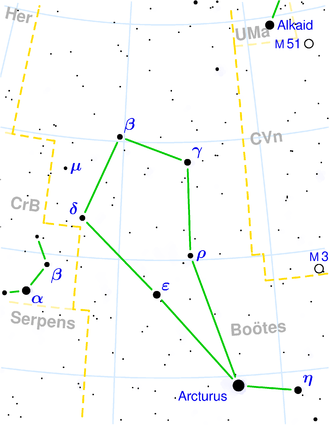NGC 5730
| Galaxy NGC 5730 |
|
|---|---|

|
|
| SDSS recording | |
| AladinLite | |
| Constellation | Bear keeper |
|
Position equinox : J2000.0 , epoch : J2000.0 |
|
| Right ascension | 14 h 39 m 52.1 s |
| declination | + 42 ° 44 ′ 32 ″ |
| Appearance | |
| Morphological type | In: Sbrst |
| Brightness (visual) | 14.0 mag |
| Brightness (B-band) | 14.6 mag |
| Angular expansion | 1.8 ′ × 0.4 ′ |
| Position angle | 88 ° |
| Surface brightness | 13.5 mag / arcmin² |
| Physical data | |
| Redshift | 0.008449 ± 0.000017 |
| Radial velocity | (2533 ± 5) km / s |
|
Stroke distance v rad / H 0 |
(118 ± 8) · 10 6 ly (36.2 ± 2.5) Mpc |
| history | |
| discovery | Wilhelm Herschel |
| Discovery date | April 9, 1787 |
| Catalog names | |
| NGC 5730 • UGC 9456 • PGC 52396 • CGCG 220-044 • MCG + 07-30-46 • IRAS 14379 + 4257 • GC 3979 • H III 657 • h 1867 • | |
NGC 5730 is a 14.0 likes bright irregular galaxy of Hubble type in the constellation Bootes and is 118 million light years from the Milky Way center. Together with NGC 5731, it forms a gravitationally bound and interacting double galaxy and was discovered together with it on April 9, 1787 by Wilhelm Herschel with an 18.7-inch reflector telescope, who called it “Two. Both vF, vS, E in different directions, 2 or 3 ′ distant in parallel, each south of a small star ”.
